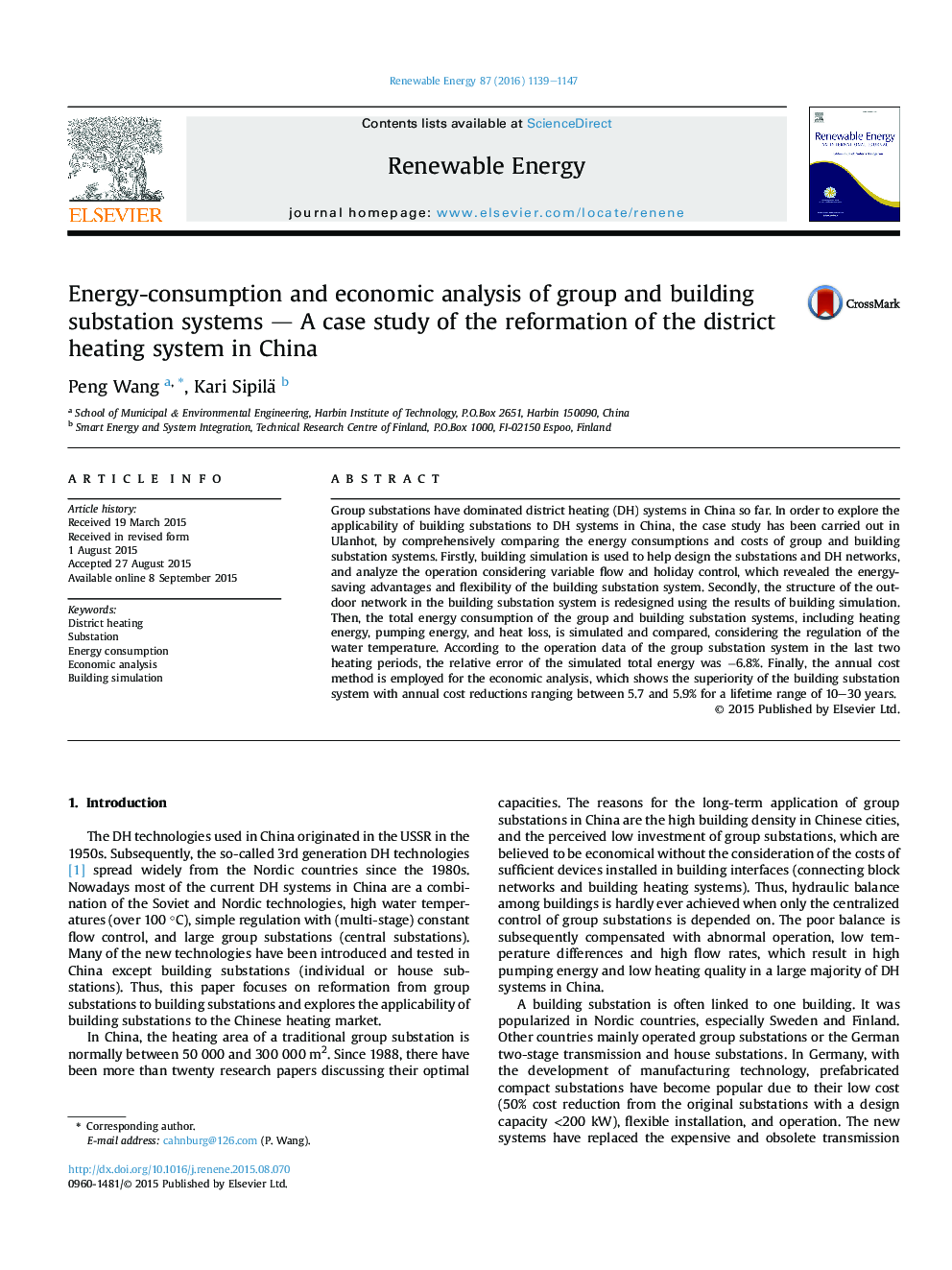| کد مقاله | کد نشریه | سال انتشار | مقاله انگلیسی | نسخه تمام متن |
|---|---|---|---|---|
| 299870 | 512453 | 2016 | 9 صفحه PDF | دانلود رایگان |
• Building simulation is used to analyze the operation of district heating systems.
• The building substation system saves the pumping energy by variable flow control.
• The building substation system consumes less energy.
• The building substation system saves the annual cost.
Group substations have dominated district heating (DH) systems in China so far. In order to explore the applicability of building substations to DH systems in China, the case study has been carried out in Ulanhot, by comprehensively comparing the energy consumptions and costs of group and building substation systems. Firstly, building simulation is used to help design the substations and DH networks, and analyze the operation considering variable flow and holiday control, which revealed the energy-saving advantages and flexibility of the building substation system. Secondly, the structure of the outdoor network in the building substation system is redesigned using the results of building simulation. Then, the total energy consumption of the group and building substation systems, including heating energy, pumping energy, and heat loss, is simulated and compared, considering the regulation of the water temperature. According to the operation data of the group substation system in the last two heating periods, the relative error of the simulated total energy was −6.8%. Finally, the annual cost method is employed for the economic analysis, which shows the superiority of the building substation system with annual cost reductions ranging between 5.7 and 5.9% for a lifetime range of 10–30 years.
Journal: Renewable Energy - Volume 87, Part 3, March 2016, Pages 1139–1147
